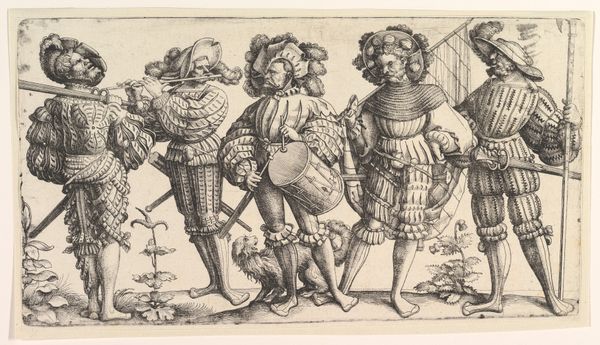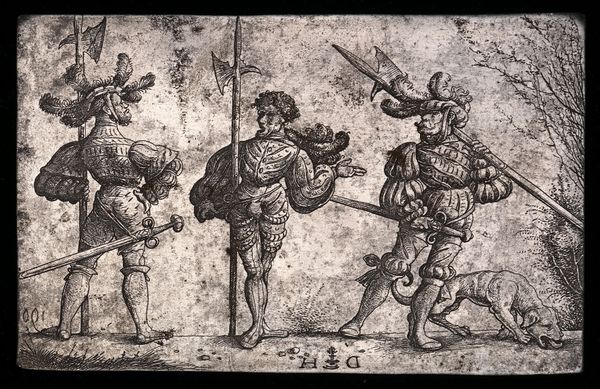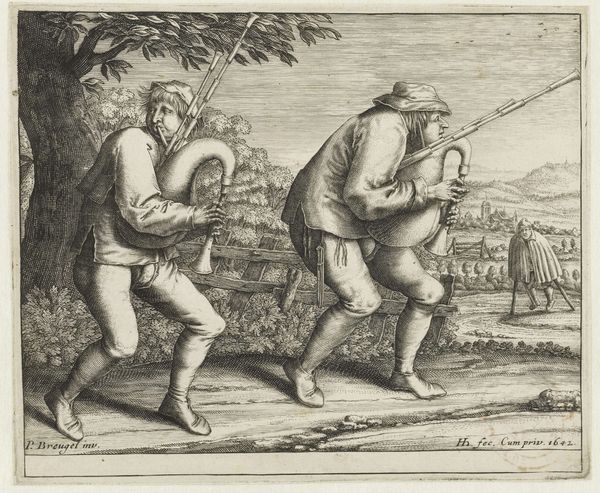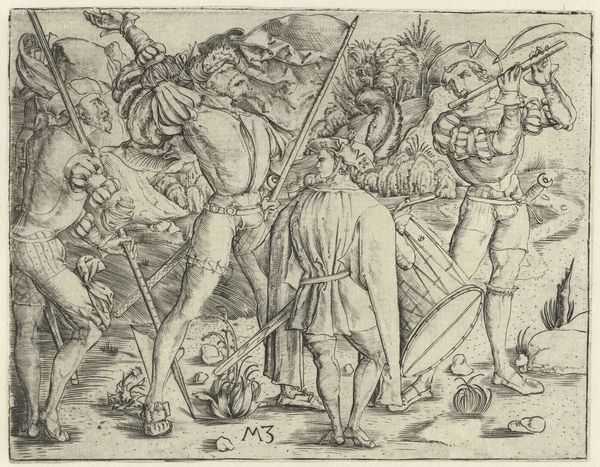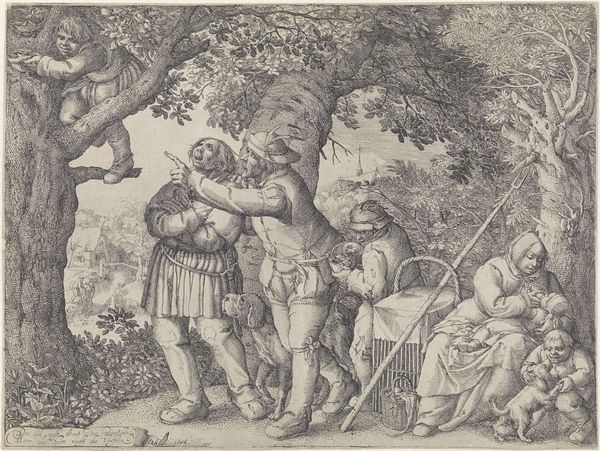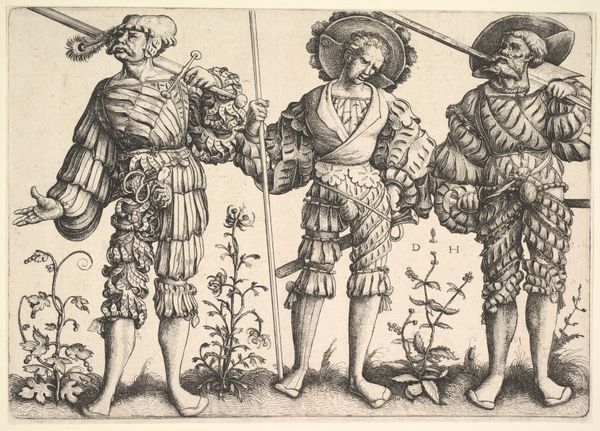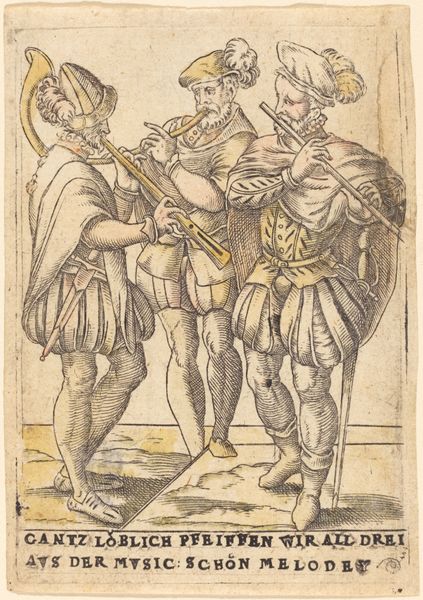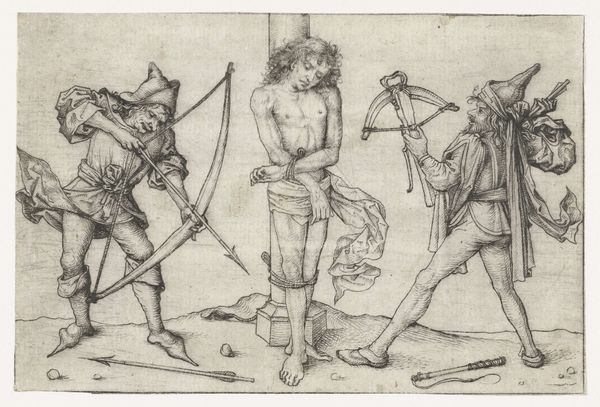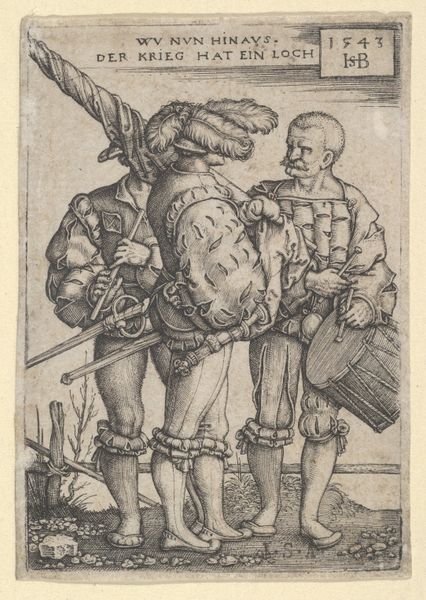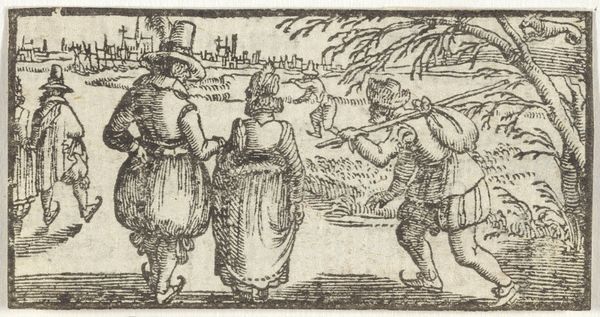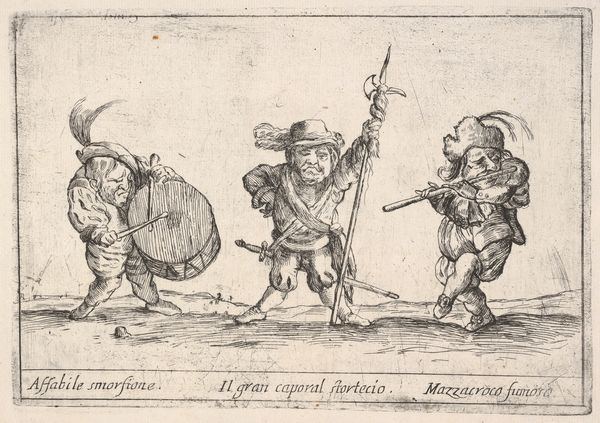
Dimensions: sheet (trimmed to plate mark): 8.7 x 13.2 cm (3 7/16 x 5 3/16 in.)
Copyright: National Gallery of Art: CC0 1.0
Curator: Immediately striking, isn’t it? The meticulous details render a kind of formidable display. Editor: These three figures almost jump off the paper. Before we delve in, can you provide some background? Curator: Of course. This engraving, known as "Three German Soldiers Armed with Halberds," comes to us from Daniel Hopfer, around 1510. Hopfer, of course, is regarded as a pioneer of etching, mastering the technique and its application. Editor: Knowing it’s an engraving shifts my perspective. The precision he achieves with that medium is remarkable. Look at the detail in the fabric and armor, the way light is conveyed through those incredibly fine lines. And what’s fascinating, too, is the material implication. I am imagining his painstaking labour with the plate. Curator: Absolutely, there's such a powerful narrative surrounding labor in that period and the impact that the labor practices can have on a community. This work reflects on how materials—iron, fabric, even the ink—become entangled in sociopolitical concerns around warfare. Editor: Right. Each of the figures displays their halberds; symbols of authority and brute strength. Their elaborately plumed helmets speak to notions of class, I presume? How might considerations of class, gender and identity factor into a work like this? Curator: These accoutrements were carefully curated—literally made, in some instances—to perform gender. These German soldiers, by constructing themselves through garments, weaponry, even a hound—signal male dominance through performance of material. Editor: You make me want to trace each of these characters as they embody history and their material moment. I am so interested in how an image such as this one made its way out into society and its effects on the labor force. It's more than a simple image—it becomes another cog in a complex cultural mechanism. Curator: The power and meaning emerge, of course, not just from Hopfer's skill or historical forces but our present act of looking—an act inseparable from how we confront inequality today. Editor: Agreed. Each encounter—with its individual perspective, history, social-economic lens—shapes its experience uniquely. Curator: A conversation across time—enabled by both art and its careful examination.
Comments
No comments
Be the first to comment and join the conversation on the ultimate creative platform.
